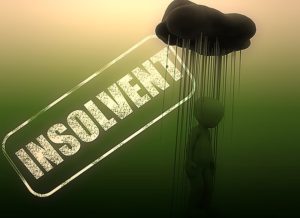The latest Finance Bill received Royal Assent on 22 July 2020. One important element of that bill was HMRC will become a preferential creditor for some taxes including PAYE and VAT arrears in insolvencies from 1 December 2020. This is an important change for several reasons.
Previously, HMRC ranked as an unsecured creditor along with suppliers, and importantly after floating charge security. With this change, HMRC will now rank ahead of floating charge security. Such security is used by banks and other lenders to secure loans and overdrafts over the general assets of a company which gives them a better chance of recovery in the event of a liquidation. With HMRC ranking ahead of secured lenders, it is likely to mean that new secured lending is going to less available and more expensive as the risks increase. For directors, it could also mean that there is an increased chance that they will need to provide a personal guarantee.
For lending that is already out, the lender is now much more likely to focus on the payments to HMRC being kept up to to date to minimise the potential debt that will fall into the preferential status. It is likely that keeping payments to HMRC up to date is going to be an additional term of any new lending.
Lenders may also want to move customers to different products that give greater security – for example moving an overdraft (secured by way of a floating charge) to a factoring agreement (secured by an assignment of the debts)
On the other hand, there is the possibility that lenders will not push businesses into liquidation or administration if they are likely to see less of a return because of the change of status of HMRC to a preferential creditor.
There are still a few months before this change comes into force and so there may be opportunistic insolvencies where there are already significant arrears to the HMRC which after 1 December would be preferential.
Directors and shareholders that have lent money to there businesses should also be aware of the changes as it will affect the value of their security.
If you thought that HMRC was already a preferential creditor they were up until 2002 when it changed and the Enterprise Act 2002 came into force. Prior to that lenders took a keen interest in the level of HMRC arrears and would often take action to enforce their debt before arrears became an issue. Since the financial crash of 2008, lenders have been discouraged from enforcing security unnecessarily and I suspect as a result of the current COVID crisis this will continue, but I also think that lenders will tighten their lending criteria even further and funding will become harder to obtain for underperforming businesses. There will be specialised lenders out there to fill the gap, but the costs are likely to be significant.
If funding is not available or too expensive this might drive companies into liquidation that may have been able to avoid it without this change.
Still uncertain about any of the changes of HMRC preferential creditor status and how this affects you? Contact me today and I will be able to assess your situation and provide professional guidance for your business’s future.




